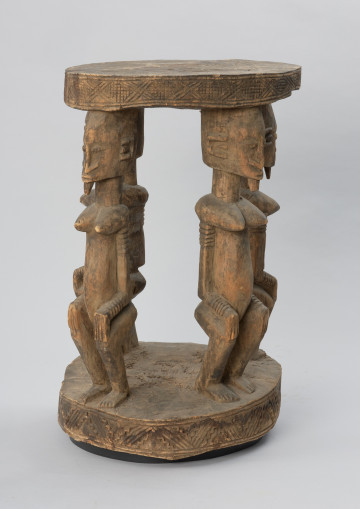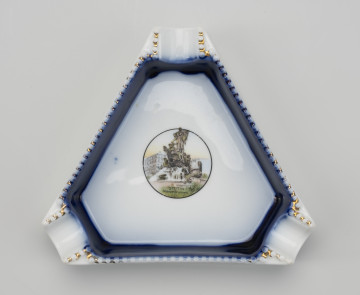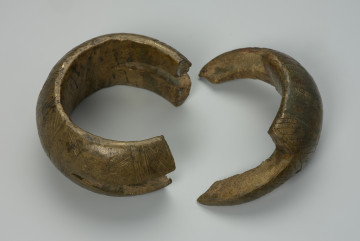
Table
między 1970 — 1973
National Museum in Szczecin
Part of the collection: Collection of Dogonian art
The fancy-form sirige mask uses naturally curved wood. Although its appearance differs from traditional sirige, it is recognised by the people of Dogon country as a representation of the home of the ginna chief, i.e. a big family. It is an example of art that emerged with the growing tourism in the Dogon and the demand for so-called souvenir art. Until a few years ago, the production of and trade in objects made specifically for tourists was an important source of income for local artists, middlemen and traders. Masks have gained the status of the most important souvenirs from a stay in Africa. Dogon masks can be bought in many places not only in Mali, but also in other African countries.Growing tourism has also influenced changes in mask dances. The dances held during the Dama funeral festival have been modified as a theatrical performance for tourists and visitors to the Dogon villages. Dances are performed by the same men, but the performances differ in several aspects: the dances have been shortened, they always take place in a public square, they are not accompanied by songs but only by drums and the audience consists of tourists and Dogon children. The Dogon dances were first taken out of their traditional setting in the early 1930s, when a group of dancers was sent to Paris. Today they continue to participate in many art festivals and international competitions in Africa and beyond.The emergence of masks as a product for tourists is not a new phenomenon. The picturesque Dogon villages began to attract the attention of tourists as early as the late 1940s. The greatest increase in this interest was at the turn of the 20th/21st centuries. It stopped at the beginning of 2012.
Ewa Prądzyńska
Author / creator
Dimensions
cały obiekt: height: 162 cm, width: 25 cm
Object type
sculpture, mask
Creation time / dating
Creation / finding place
Identification number
Location / status

między 1970 — 1973
National Museum in Szczecin

1901 — 1939
National Museum in Szczecin

między 1940 — 1950
National Museum in Szczecin
DISCOVER this TOPIC
National Museum in Lublin
DISCOVER this PATH
Educational path